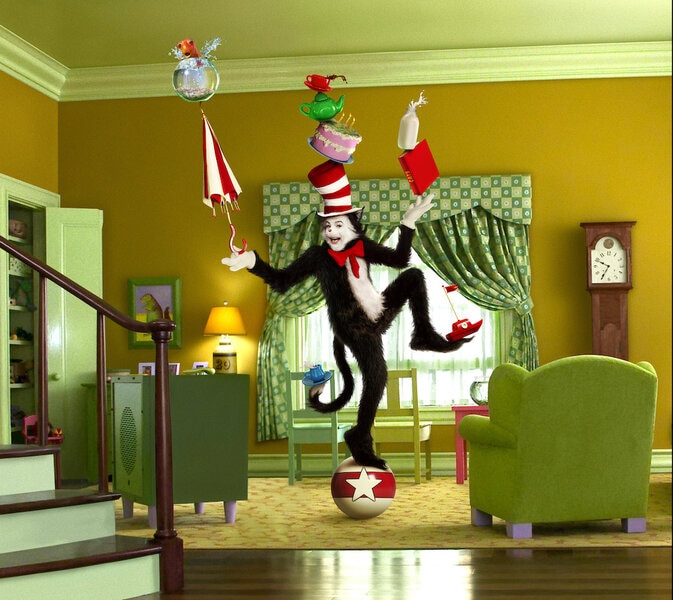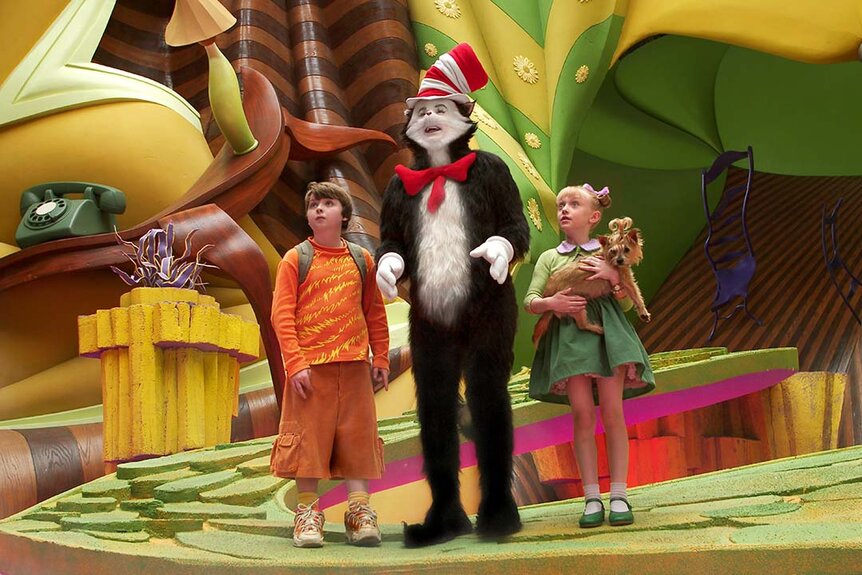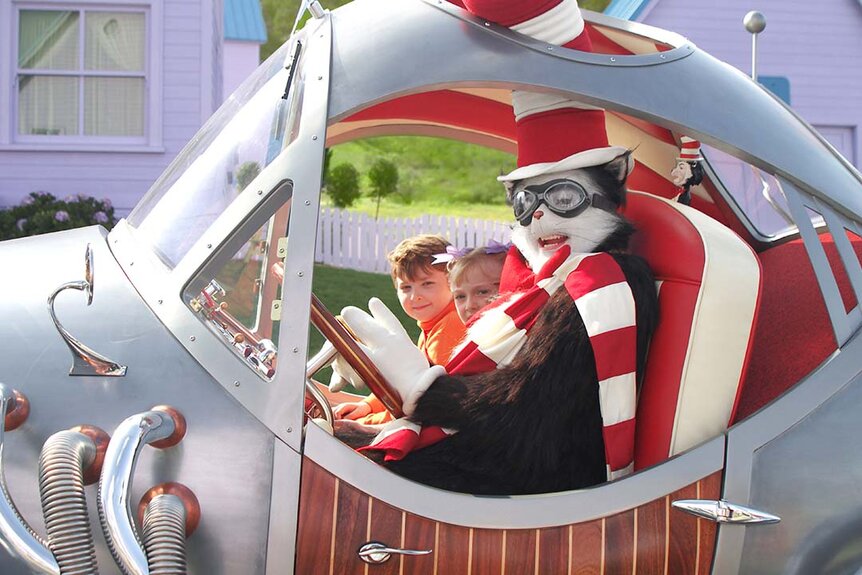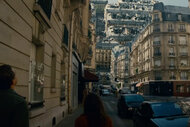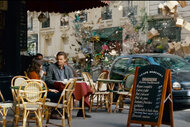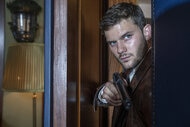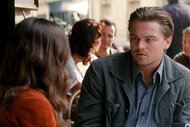Create a free profile to get unlimited access to exclusive videos, sweepstakes, and more!
Cat in the Hat Director Stands By Live-Action Dr. Seuss Film: "It's Weird and Funny and Anarchic"
Two decades of the Kupcake-Inator!!!
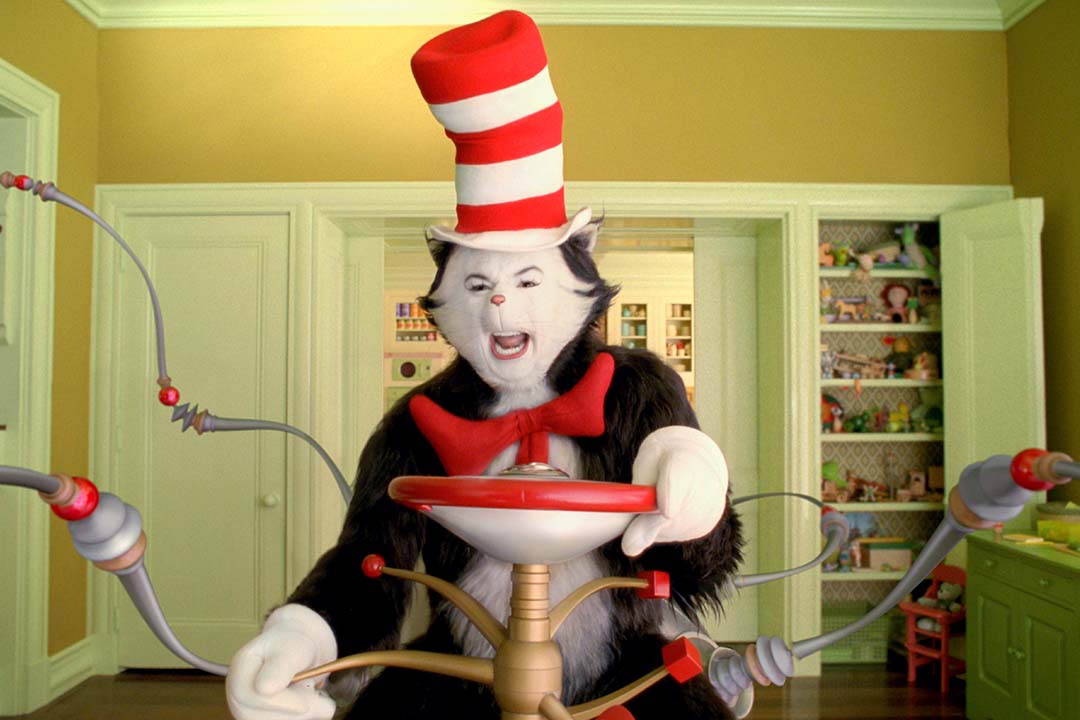
Dr. Seuss once said, "Adults are obsolete children, and the hell with them."
The man kind of had a point. Grown-ups are often cynical, myopic, and averse to having fun — even if said fun is a little sophomoric at times. Not everything needs to be dour and mature. There's a healthy equilibrium between childish tendencies and a desire to follow the rules, as a whiskered interloper once taught a pair of siblings by the name of Sally and Condor. Sorry, Concrete. Nope, that's not right, either. Sally and Conrad... it's Conrad, right?
In any case, the sudden downturn of imagination and whimsy that occurs with age was almost certainly one of the contributing factors in the unjust failure of a little movie called The Cat and the Hat (now streaming on Peacock). Released 20 years ago this week, the Mike Myers-fronted adaptation of the classic children's book is the reason why there have been no more live-action translations of Seuss's seminal works. "I think we succeeded in screwing it up for everyone else," director Bo Welch wryly says over a Zoom call with SYFY WIRE.
RELATED: Dr. Seuss estate will discontinue six of the author's books over cultural insensitivities
Even so, he wouldn't trade the memories for all the gold in King Derwin's treasury (shoutout to our fellow Bartholomew Cubbins and the Oobleck fans). "It was a once-in-a-lifetime kind of experience to go through that," he adds. "It was really amazing. I feel lucky to have to have done it and ... I thank Mike Myers for that."
How a failed SNL movie adaptation led to The Cat in the Hat
Welch started his career as a production designer, working with acclaimed storytellers like Ivan Reitman, Tim Burton, Alfonso Cuarón, Mike Nichols, and Barry Sonnenfeld on such films as Ghostbusters II, Beetlejuice, A Little Princess, The Birdcage, and Men in Black. He moved over to directing in the early 2000s with episodes of Secret Agent Man and the first iteration of The Tick.
His big break at helming a major studio feature arrived with a call from Mike Myers, who reached out with an offer to work on a project inspired by his fan favorite Saturday Night Live character, Dieter. Myers initially offered Welch the job of production designer, but he declined. "I said to him, ‘Nah, don’t I really want to design it, but I'll direct it.' He went, ‘Hmm, that's interesting,' and basically hired me at that point."
They got pretty far into development and even went so far as to host a table read with a live audience. "Everyone loved it and laughed, and it was hysterical, but Mike decided that it didn't work on a screenplay level. And so, much to our disappointment, he said, ‘Nope, it doesn’t work. Can’t be fixed, we’re not going to do it.’" Rather than eat the loss, however, Universal Pictures "more or less rolled that debt ... into Cat in the Hat," Welch explains.
RELATED: Why Do We Never See the Full High Table in the John Wick Franchise? Blame Austin Powers, Baby!
It seemed like a no-brainer for the studio, which enjoyed box office success a few years earlier with another live-action Seuss adaptation, Ron Howard's How the Grinch Stole Christmas. With Imagine Entertainment and DreamWorks on board as co-producers, they were off to the races with a whopping $109 million budget. Welch describes the experience of being responsible for such a massive production as "overwhelming" and "mind-boggling."
"It condenses how I would describe life into a short and intense experience, where you have the highest of highs and the lowest of lows," he continues. "But as far as the learning curve part, I had been around enough big movies and I knew how it was supposed to go."
Set in the fictional town of Anville, The Cat in the Hat boasts a whimsically wonky aesthetic that feels redolent of both Seuss's original illustrations and the visual flair employed by Tim Burton, who really established his visual trademarks with Beetlejuice and Edward Scissorhands — both which were designed by Mr. Welch. "Our sensibilities were compatible," he says.
How do you adapt a Dr. Seuss book for the big screen?
Right off the bat, the project faced the uphill battle of every Seuss-related movie over 30 minutes long: How do you adapt a super-brief children's book centered more around the execution of clever rhymes than actual plot and character development?
The screenplay for Cat in the Hat (credited to Alec Berg, David Mandel, and Jeff Schaffer) follows a pair of siblings — Conrad (Spencer Breslin) and Sally (Dakota Fanning) — who learn how to find a comfortable middle ground between rule-breaking and rule-following from the titular tabby — and his two Things — over a single afternoon while their mother (Kelly Preston) is away at work. Those are the basic beats of Seuss's book, which are then fleshed out with the addition of characters like a two-faced neighbor (Alec Baldwin) and subplots involving a runaway dog and the Cat's home dimension leaking into our own.
"You have to cook something up and as soon as you start to do that, there's a certain group who look adoringly at all of the Dr. Seuss books — especially Cat in the Hat — and they are instantly infuriated that you have taken this book and have violated it by adding any kind of narrative or story," Welch says. "So that was rough. I think that ultimately led to the insanely horrible reviews [which] were generated by people who felt violated by what we did with this precious book."
RELATED: Avengers beware, the latest cinematic universe is coming from the pages of Dr. Seuss
Myers was, of course, on a Hollywood hot streak at the time following Austin Powers and Shrek, but his suggestive and "bawdy" style of humor may have been a tough sell for those who didn't think he was a good fit to portray Seuss's most iconic creation. "How do you bridge this thing, where you have a book that has no story; you have a comedic actor at the top of his game, but whose style really isn't what you would pick for an adorable children's book?" Welch muses. "It was dangerous going into it and I liked what we did."
Indeed, The Cat in the Hat is chock full of innuendos straining its PG rating to the absolute limit, but that's what made the film so special. It didn't talk down to young viewers, who probably didn't catch half the mile-a-minute references meant for the parents and guardians accompanying them to the theater.
"I wouldn't change it," asserts Welch. "You do step into that zone where if you're patronizing the kids, they're gonna get bored. And their parents want to be entertained as well, so that's what we did. But there were some jokes in there that I was not that keen on. For instance, the ‘Dirty Hoe’ joke. We went around and around and around on that. I thought it was not a great joke. Mike loved it and if he liked it, we were going to do it and it was going to stay in the movie."
If you ask us, it's a brilliantly off-color gag that fits right in with the Cat's personality. He's a cartoon character come to life — à la's Jim Carrey's green-faced alter ego in The Mask. You never know what he's going to say or do next, and Myers was perfectly-suited to bring this walking hairball of entropy to life. "From a performance standpoint, the Cat in the Hat was an anarchist," Welch adds. "Thing 1 and Thing 2 were manifestations of his anarchy. I aimed for that and think it came across. He was an anarchist, who taught these kids to not be bored and use your imagination."
That spontaneous, chaotic philosophy permeates every aspect of the character, right down to his New York-inspired accent, which Myers brought to the table. "You think of the Cat and he's mute in this two-dimensional book," Welch notes. "And then to give him a voice is like, ‘Wow! What a surprise!’ That's kind of the last voice in the world I would expect, having read the books as a kid. But for him to come out with that voice is a really great example of opposites. Where you would think, ‘Oh, the Cat's going to be all sweet and saccharin.’ But no, he comes out as a New Yorker. I found it endlessly hysterical and entertaining, as did many people."
Like most Cat in the Hat fans, Welch loves the "Amazing Kupcake-Inator," as well as the hilariously bizarre scene of the Cat getting mistaken for a piñata and sustaining a baseball bat straight to... a sensitive area, shall we say. Overcome with pain, the anthropomorphic feline lets out a wail of anguish and begins hallucinating as "Easy" by The Commodores plays over the soundtrack. "One of my favorite images is the the unicorn and we dropped flitter in front of the camera," the director remembers. "It was just surreal and crazy."
How uncomfortable was Mike Myers in the Cat in the Hat costume?
Portraying the eponymous pussy wasn't easy for Myers, who, like Jim Carrey on The Grinch, was forced to endure a sweltering full-body suit and extensive makeup every day (Carrey famously had to be trained by a CIA torture expert).
"I know for a fact he was very uncomfortable," Welch says of his leading man. "He would come onto the stage after getting into his makeup and he had one of those those things that shoots ice water through the costume. There's a tube coming out the back of his costume and someone's walking with an ice thing behind him. As soon as he entered the stage, you could hear the dull roar of the air conditioning being turned up to like subzero temperatures. And now, all the crew is freezing. More often than not, I would go greet him and say, ‘Hey Mike, how you doing?’ And he would say, ‘The costume smells like ass!’ How do you respond to that? So it was tough. The goal was to give him physical flexibility, but in order to achieve that, you're pretty much encased."
Why didn't the live-action Cat in the Hat movie get a sequel?
The answer to that question comes in two parts. For one thing, critics — Dr. Seuss's widow, Audrey Geisel, among them — absolutely hated the film. As we mentioned earlier, The Cat in the Hat is why no more live-action adaptations of the author's works were green-lit after 2003. "The Seuss estate said, ‘That’s enough of that.’ As if we were besmirching the family brand," Welch adds. Secondly, the movie underperformed at the box office, grossing just $133 million worldwide against a sizable budget of $109 million.
Despite the fact that Welch was too busy with the production to spare a thought for potential sequel ideas, he did briefly fantasize about getting to make a second one. "I thought, 'Well, if this works, it would be fun to do it again. I would gladly jump back into it.’" With Myers returning to his old prosthetic ways in shows like The Pentaverate, the filmmaker may someday get his wish. "Yeah, you never know," he replies when we suggest there's still hope. "Crazier things could happen."
In the meantime, Welch can take solace in the fact that the live-action Cat in the Hat has become a popular cult classic over the last two decades among the now-grown youngsters who grew up loving the movie (a cursory Google search yields a plethora of articles coming to its defense all these years later). "I think it's weird and funny and anarchic," the filmmaker says of this vindicating reappraisal. "There's a craziness to it that I think people can embrace."
The Cat in the Hat is now streaming on Peacock.
